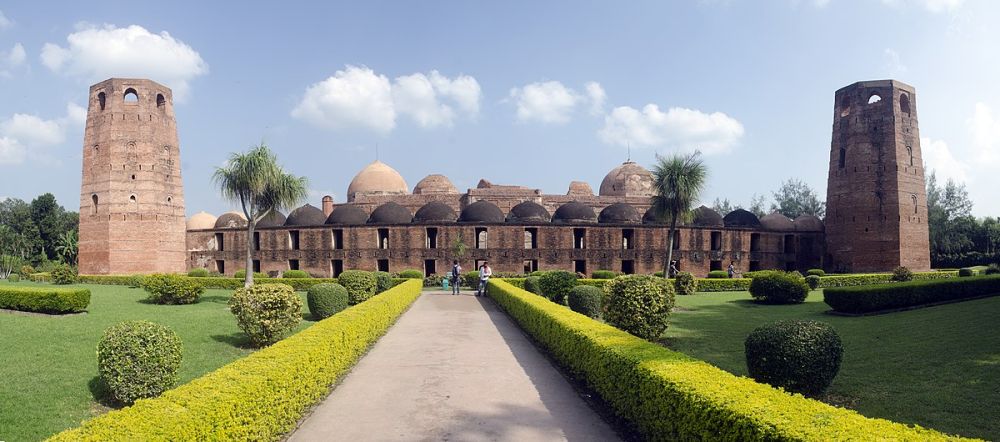

The Katra Mosque is a significant historical monument located in Murshidabad, West Bengal, India. This mosque stands as a testament to the region's rich Islamic heritage and architectural grandeur. Built in the 18th century, the Katra Mosque has been attracting tourists, historians, and architecture enthusiasts for many years.
The Katra Mosque was constructed in 1723-24 by Murshid Quli Khan, the first Nawab of Bengal. It was intended to serve as a place of worship and a madrasa for Islamic education. Murshid Quli Khan, originally named Surya Narayan Mishra, was a brahmin and an influential figure who played a crucial role in shifting the power base from Dhaka to Murshidabad, which then became the capital of Bengal.
The Katra Mosque is known for its distinctive feature: the presence of two large towers, which were partly destroyed by an earthquake in 1897. The earthquake caused significant damage to the structure, but the central hall and the entrance portal still stand in their majestic form. Even in its partly ruined state, the mosque remains an architectural wonder and a beacon of Islamic culture in the region.
Over the years, tourism at Katra Mosque has grown, with visitors coming to admire its architectural beauty and historical importance. The mosque's tourism history is intertwined with the cultural and academic tours organized by various institutions and travel enthusiasts. The site is now under the protection of the Archaeological Survey of India (ASI) and is recognized as an important heritage site.
Visitors to the mosque can explore the vast courtyard, the remains of the madrasa, and the Nawab's tomb, which is located under the staircase of the main entrance. The mosque complex also offers picturesque views of the surrounding areas, which captivate both domestic and international tourists alike.
In recent years, the latest tourism trends for sites like the Katra Mosque have focused on sustainable and responsible tourism. Authorities and tour operators are increasingly emphasizing the importance of preserving the site's integrity while providing educational content to tourists.
Virtual tours and online information resources have also become more prevalent, especially in the wake of global events such as the COVID-19 pandemic. This shift has allowed a broader audience to experience the grandeur of the Katra Mosque from the comfort of their homes.
Additionally, thematic cultural tours that include the Katra Mosque alongside other historical sites in Murshidabad are gaining popularity. These tours often take visitors on a journey through time, highlighting the rich history and contributions of Islamic culture in Bengal.
In conclusion, the Katra Mosque continues to be an integral part of the tourism landscape in Murshidabad. Its historical significance, architectural beauty, and the ongoing efforts to preserve and promote the site ensure that it remains a must-visit destination for anyone interested in India's rich cultural heritage.